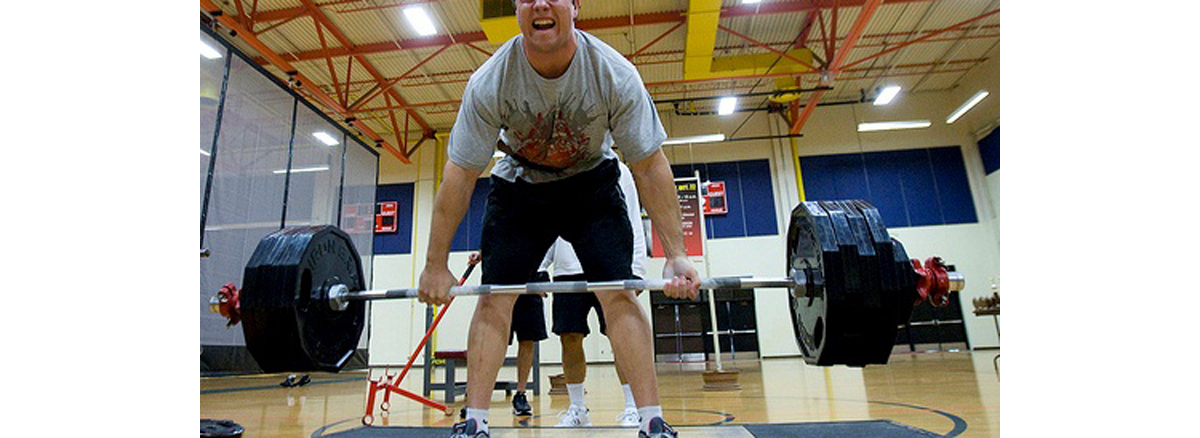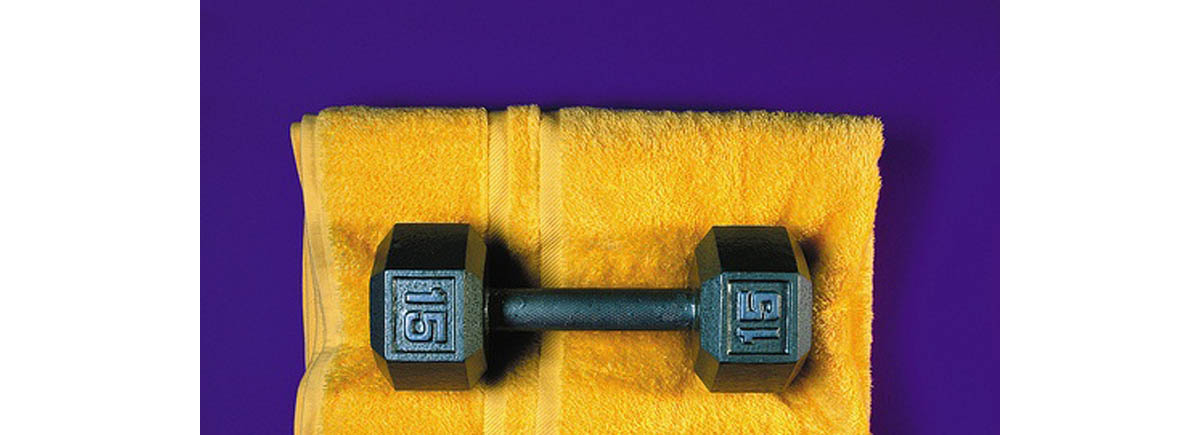Most people in your gym barely know what they’re doing from one workout to the next, let alone what they’ll be doing in 12 months time. But look around your gym – how many of them are in awesome shape and shifting the sort of weights that would make the Incredible Hulk look like a 12 year-old girl?

Probably not many.
While it may suit you to go into the gym, do a bit of this, a bit of that, and generally aim to lift a bit heavier or complete more sets and reps per session, this haphazard, unplanned progression will only work for so long. It’s highly likely that once you’re past the newbie phase, where strength gains come easy, you’ll plateau hard and find it hard to break free.
This is why it’s absolutely vital to have a set plan in place, dictating not only what you’ll do from workout to workout and week to week, but where you’ll be in three, six, nine and twelve months time.
Now, unless you’re best buddies with Confucius, you won’t be able to know exactly what weights you’ll be lifting later down the line, but you can make a good guess and plan to make awesome gains by periodizing your training.
Yearly Overview
First things first, you’ve got to split your year up into four lots of 13 weeks.
Why 13? Well, each phase or “mesocycle” will run for 10 weeks and you’ll have two weeks off between each one, making 48 weeks in total. Add in the fact you may have another four weeks of no training due to vacations, work commitments or illness, and it comes in at 13 weeks per cycle. Giving you four blocks in a 52 week year.
Goals
Pick a goal and stick with it for the whole year.
Never has the phrase “Jack of all trades, Master of none” been more appropriate than it is in strength training.
If you want to run a marathon, compete in bodybuilding, set a record powerlifting total and start Crossfit training, you’ll likely fail at all of them.
Pick one main strength-based goal, and stay with it through thick and thin.
Exercise Selection
This can be a little tricky, but here are the basic guidelines:
If you’re a powerlifter, you should stick to using back squats, conventional or sumo deadlifts and competition bench presses as your main exercises as much as possible in every cycle, unless injury forces you to have to alter the plan.
If you’re training for general strength increases however, switch between front, back and box variations for the squat, conventional, sumo, deficit, rack or trap bar deadlifts, and competition presses, pin presses, board presses, dumbbell presses or military presses for your benching variation.
The Cycles For A Powerlifters And Strength Athletes
The following plan is designed for a powerlifter or strength athlete looking to build some seriously impressive numbers over a 12 month period.
You’ll have three main workouts per week – one squat-based session, one bench press session, and one deadlift session, focusing on the exercises listed in the above section. Each session will have the main lift, plus a selection of accessory exercises.

You can include a fourth session each week if you like, but it certainly isn’t necessary. The fourth session should be kept light, and used to rehab injury, improve weak areas, improve your conditioning and cardio fitness, or add muscle mass to lagging body parts such as your biceps, triceps or calves.
Each cycle lasts 12 weeks and should be repeated four times throughout the year.
Phase 1 – Accumulation
The accumulation phase is where you build your base level of strength and conditioning and refine your technique.
Duration – Four weeks
Main Lifts – Five sets of 10 to 15 reps on each, using between 50 and 65 percent of your one rep max.
Accessory Work – Five sets of six to eight reps on each exercise, using a weight that causes you to stop just short of failure on the last rep of every set.
Squat Accessory Exercises – Front squats, dumbbell lunges, weighted sit ups, standing calf raises.
Deadlift Accessory Exercises – Stiff-legged deadlifts, lying leg curls, dumbbell side bends, cable pull-throughs.
Bench Press Accessory Exercises – Close grip bench press, dips, dumbbell rows, weighted chin-ups.
Notes – Increase weight slightly on all exercises each week, but still hitting the desired reps. None of your sets should be gut-wrenchers. The purpose of this phase is to get your body used to the heavier work to come, without becoming overly fatigued.
Phase 2 – Intensification
As the name suggests, the intensification phase is where things kick up a gear.
Duration – Four weeks
Main Lifts – Five sets of six to 10 reps on each, using between 70 and 90 percent of your one rep max.
Accessory Work – Three sets of eight to 12 reps on each exercise, using a weight that causes you to stop just short of failure on the last rep of the last set.
Squat Accessory Exercises – Safety bar squats, barbell lunges, cable woodchops.
Deadlift Accessory Exercises – Rack pulls, double overhand grip barbell shrugs, good mornings.
Bench Press Accessory Exercises – Pin presses, face pulls, wide grip pull-ups.
Notes – Use a ramping system on your main exercise. This means you start your working sets with a weight that’s tough but manageable, and add a small amount each set, so by the fifth set of six to 10, you’re really fighting to get the last rep.
Phase 3 – Realization
Here it is – time to set some personal bests.
Duration – Two weeks
Main Lifts – Work up to a five rep max in week one, then a one to three rep max in week two.
Accessory Work – Three sets of 10 to 15 reps. Accessory work should be easy here – you need to conserve energy for your main lifts.
Squat Accessory Exercises – Dumbbell or kettlebell goblet squats, hanging leg raises.
Deadlift Accessory Exercises – Kettlebell swings, walking lunges.
Bench Press Accessory Exercises – Barbell rows, incline dumbbell presses.
Notes – Just perform one top set per exercise on your main lifts. The five rep max in week one should be hard, but you should have one rep left in the tank. In week two you need to lay your neck on the line and go for broke. Make sure you have a training partner to act as a spotter and offer encouragement.
Phase 4 – Deload
Duration – Two to three weeks
This is your down-time. Don’t skip the gym completely, but take some time to perform some easier exercises, work on your technique, or bring your cardio up to scratch. Light full-body circuits, kettlebell workouts, interval cardio or tempo runs all work well here.
Phase 5 – Repeat
The goal now is to follow the same periodization pattern you used in weeks 1 to 13, but aim to lift heavier weights and set new PBs in week 26. Don’t be tempted to push things too soon – remember that getting strong is a marathon, not a sprint.
- “EFS Classic: A Practical Guide for Implementing Block Periodization for Powerlifting”, By Gabriel Naspinski, Published on September 30th, 2012, Accessed on November 18th, 2012, Retrieved from http://articles.elitefts.com/training-articles/powerlifting-articles/a-practical-guide-for-implementing-block-periodization-for-powerlifting/
- Photo courtesy of contentaction on Flickr: www.flickr.com/photos/contentaction/4099995097
- Photo courtesy of jblmpao on Flickr: www.flickr.com/photos/jblmpao/6286053405


Your thoughts on this